
I love meeting the top designers at an audiophile-catering audio company because they’re always so passionate about what they do. Why else would they be involved in perfectionist audio, if not to fulfill a burning nerdy-esque desire to create an audio product people will hopefully love?
Dominique Poupart, Product Manager at MOON by Simaudio, is one of those passionate guys. I saw it as soon as he greeted me at the front door of MOON’s facilities about a half hour drive from where I live. He glows with youthful exuberance and self-confidence. Talk about audio with him and you can see that flicker of intellectual curiosity in his eyes that tells you that his work with audio is never done—can never be done—and that he wouldn’t have it any other way. His is a lifelong sacred commitment to advancing the audio arts.
I couldn’t have asked for a better tour guide than Dominique to visit MOON’s facilities. He’s been with the company for 22 years, 15 of which he spent in the R&D department. He now oversees that department and its team of eight engineers / designers, who carry out his multi-faceted vision.
He’s also humble in the way that a lot of successful designers I’ve met are. He readily admits that there’s more than one way to skin a cat in electronics design, and that his vision, as much as he believes in it and is committed to it, may not be for everyone. There are different (circuit) paths, he conceded, that can lead to audio truth.
There’s no denying, however, that his vision is working. Since its inception as Sima in 1980, MOON has never been more vibrantly successful as it is today. The company’s product line includes 26 different models sold in 45 countries, where exports are about evenly split between North America, Europe, and Asia.
I agreed in large part to do this factory tour because I’ve always liked the sound of MOON products throughout the year. Simply put, the ACE produced a level of sound quality—chunky, rich, clear, refined—that I didn’t expect from an all-in-one product in the ACE’s price range.
The tour started with a literal spring in Dominique’s step as he led me down the hallway to a cluster of corporate offices, where I met a few of the workers, some of whom, I quickly learned, played instruments. In another sign that chez MOON it’s not just about audio, but music, I later discovered that there was a long, narrow stage on the lower level, with a set of drums, a mike, and a piano, all set up to be played.
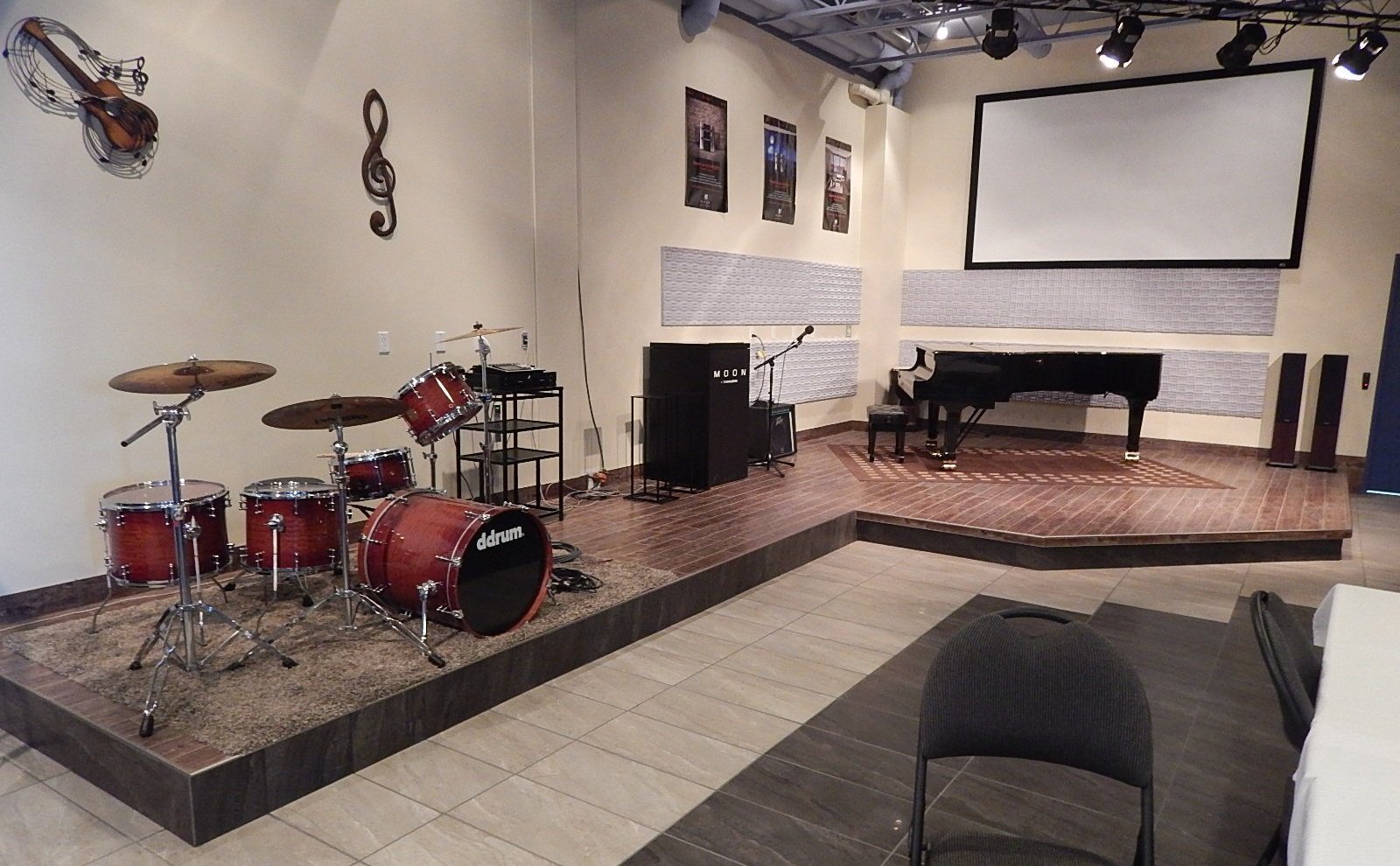
We then proceeded to another corridor, this one made of ancient stone rather than drywall, inside which stood three vertical glass displays exhibiting significant Moon products throughout the company’s decades-long history. That this small museum faced a window overlooking the company’s service department was no fluke. As per Dominique: “It’s to show that we still offer service on every single model we’ve ever built.”
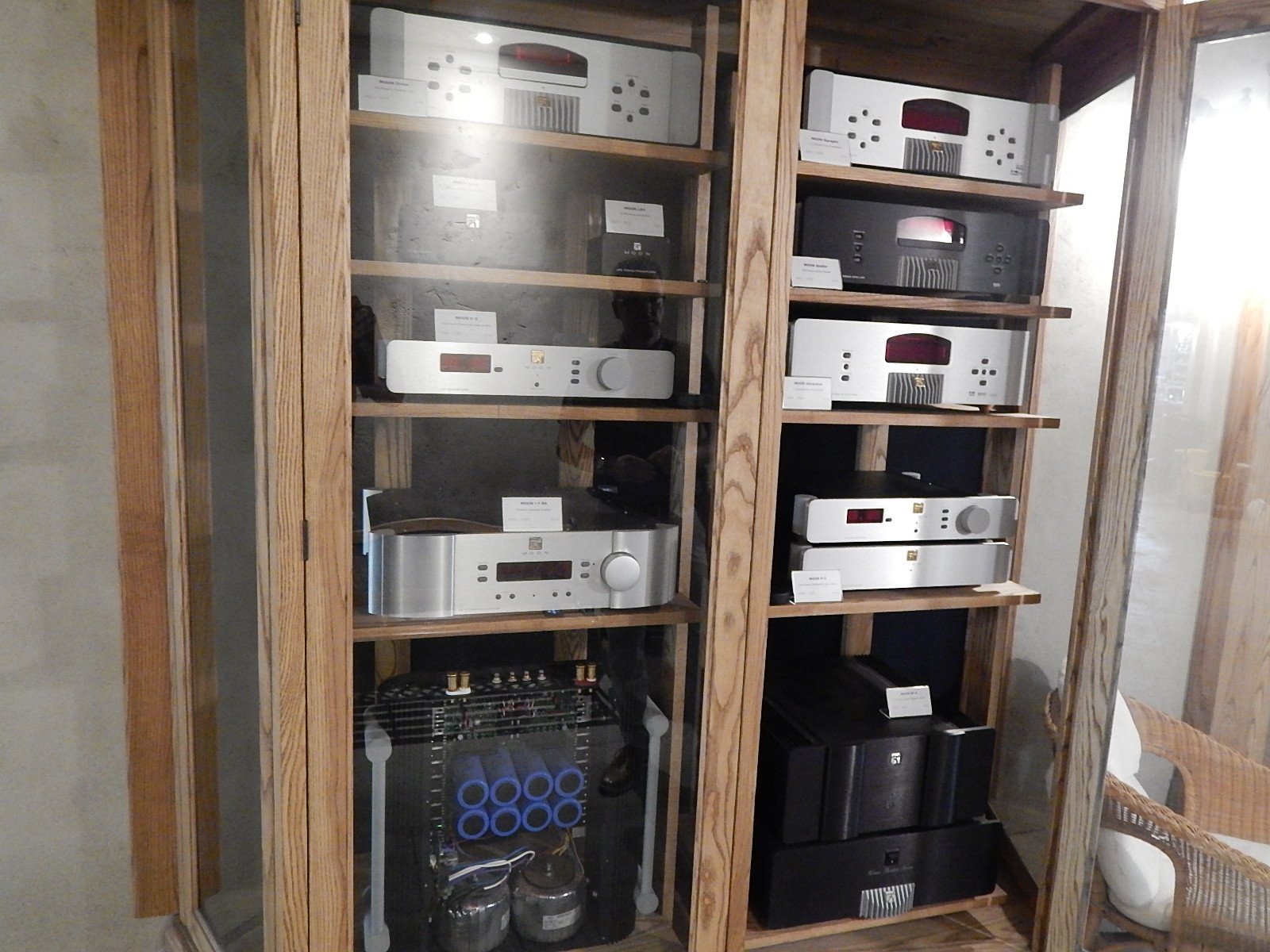
At the end of the corridor, we entered into the most bustling part of the factory, a clean, well-lit area with workers at desks and endless rows of towering steel shelves filled with parts. Aside from the job of winding its transformers, which is outsourced to a local company according to Dominique’s specs, MOON assembles all its electronic products in-house, most by hand, and, some, such as the circuit boards, with the help of robotic arms, an industrial steam-based oven, and a liquid metal soldering machine.

MOON has two robotic arms assigned to assembling its circuit boards, each handling a different aspect of the process. In the case of the first machine, the arm applies soldering paste to spots on the board designed to receive a surface-mount electronic component, such as a resistor or transistor. Electronic components—of which the company has 6000 different parts in inventory—are either surface mounted, i.e. soldered to the surface of the board, or through-hole mounted, i.e. whose leads go through the board and are soldered to the board’s underside.
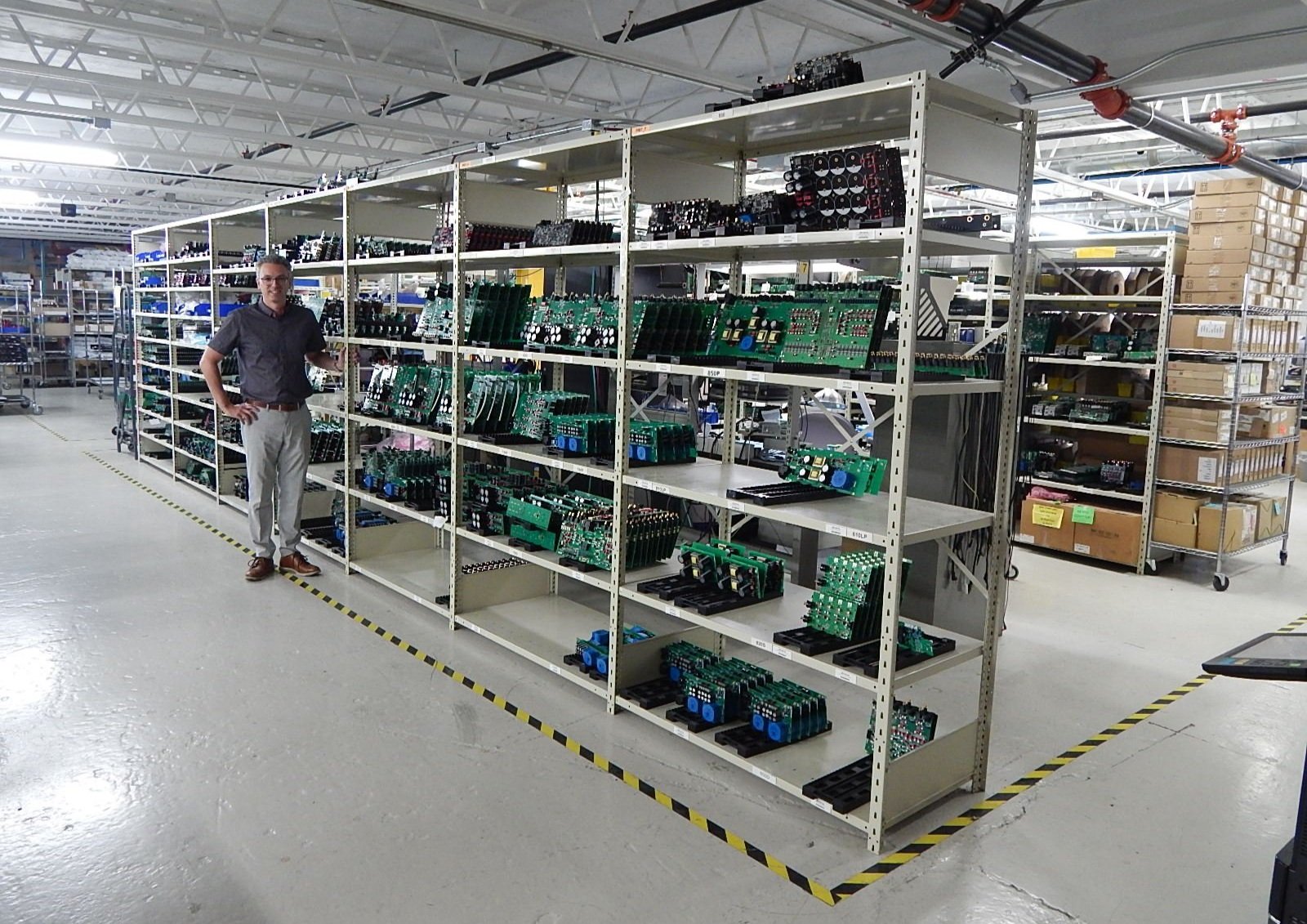
Dominique said the boards used by MOON are hybrid, in that they use both surface-mount and through-hole components. However, given a choice, Dominique prefers to go the surface-mount route for its shorter signal path and faster and more precise application. The through-hole method is best suited for bigger components, such as some of their capacitors, that need to be more rigidly affixed to the board.
The second robotic arm is a pick and place machine equipped with reels—imagine movie reels—of strips overlaid with electronic components that are fed to the arm, which takes those parts and places and orients them inside the dabs of soldering paste on the board’s surface. After this, the boards are inserted into the industrial oven to help “bake in” the components into the soldering paste.
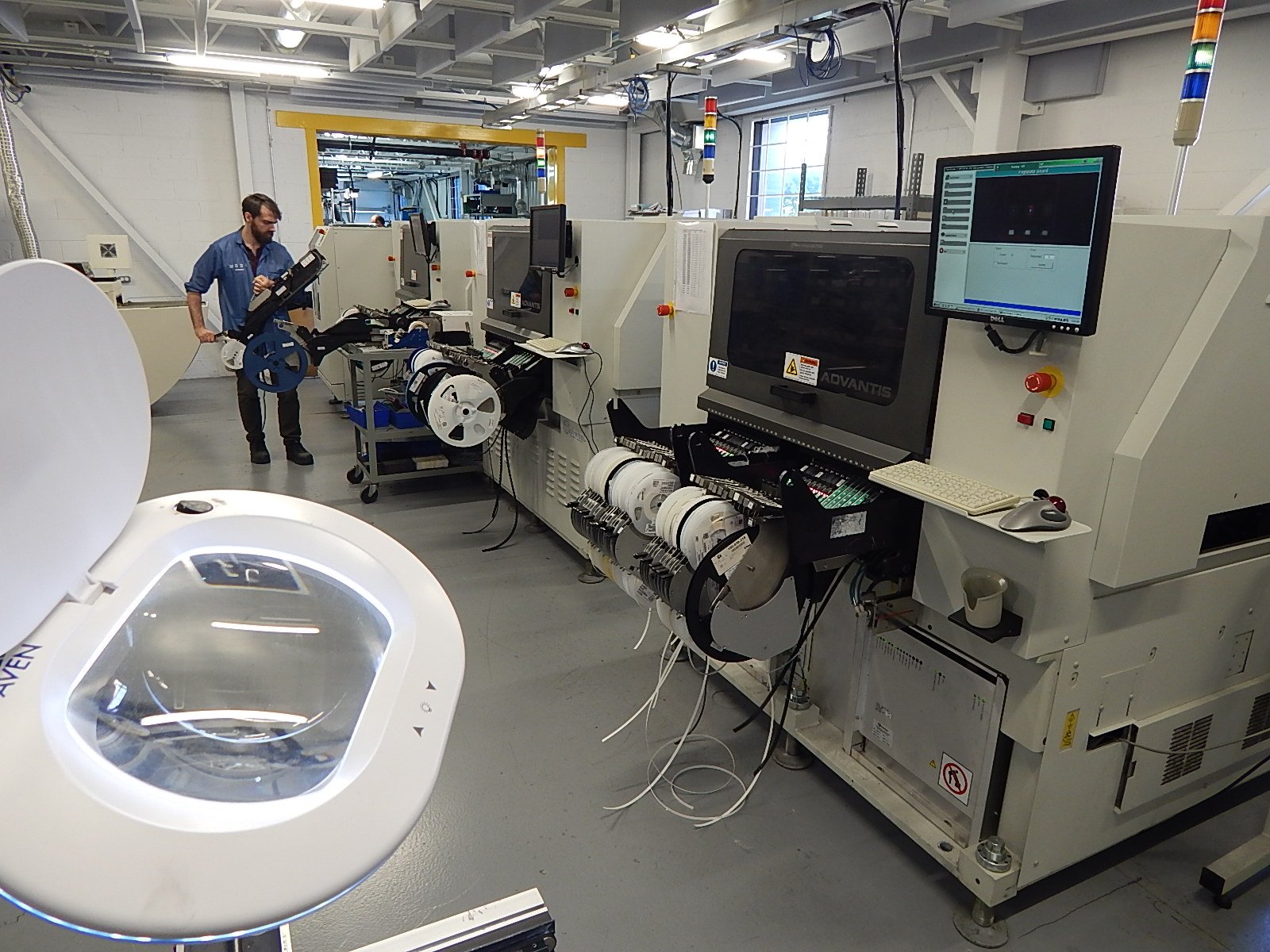
Through-hole components are then installed by hand into the board, after which the board is placed on a conveyor that slides into a “selective soldering” unit where a small fountain of liquid metal is precisely controlled to solder the pins to the board for a specific time for each pin. Et voilà!
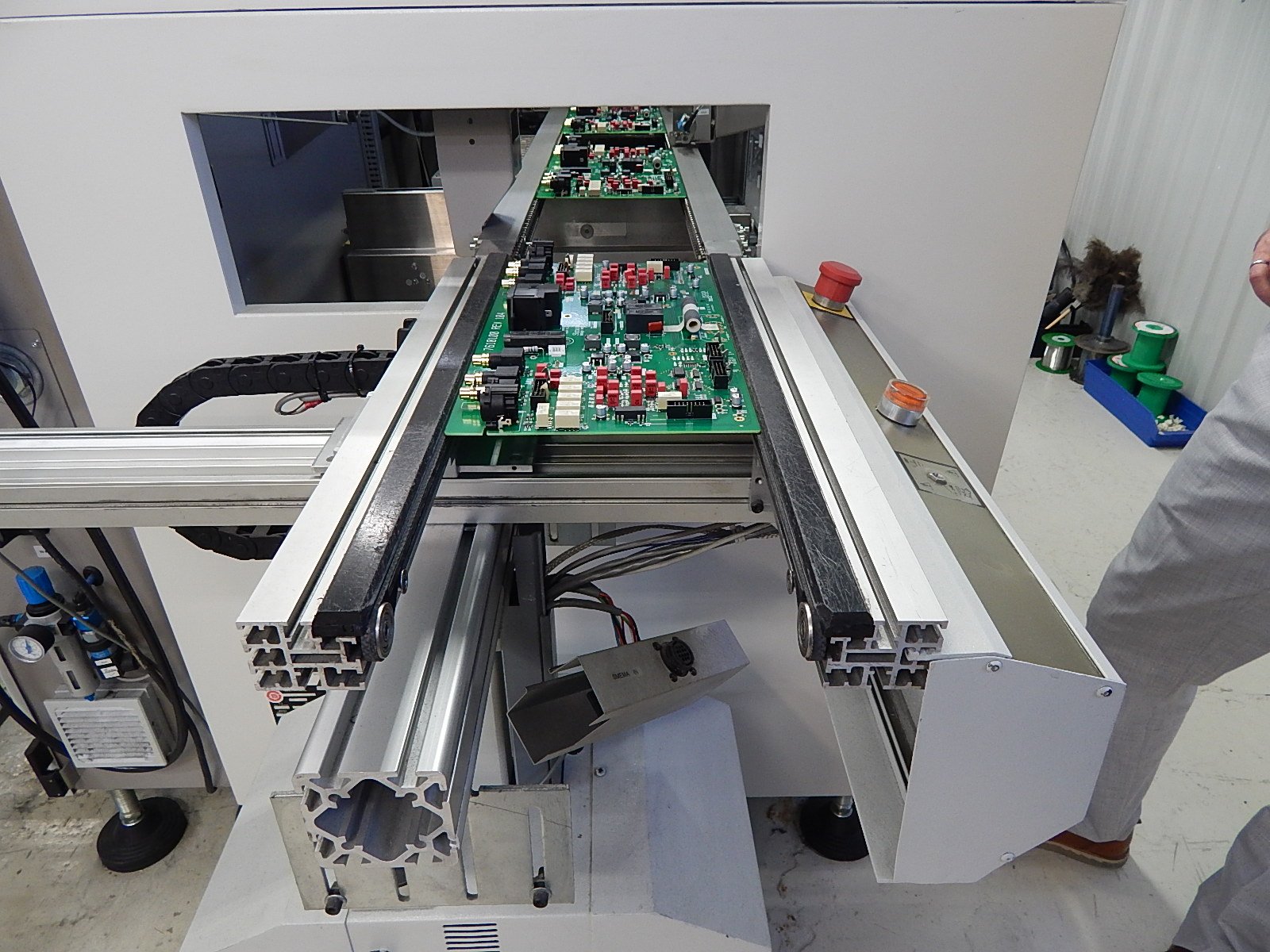
There’s something satisfying and reassuring in watching a mechanical arm glide with brisk purpose then stop on a dime, doing what it was programmed to do with seemingly perfect timing and precision. That doesn’t preclude, however, testing by humans. Every completed board is subsequently verified and tested to make sure it works exactly right.

Walking through the rows of parts for the company’s various products, and the products under various stages of being built, I was struck by how elegant and clean everything looked. I was also taken by how neatly packed the insides of some of the company’s most luxurious and complexly-designed products were. Sexy indeed!
I asked Dominique which were MOON’s biggest selling products. “The 340i integrated amp”, he replied.
The company is also known for its digital products, built around the company’s MIND (Moon Intelligent Network Device”) technology, now in its second generation, that allows not only hi-res streaming but intelligent control of a whole MOON chain. The second generation MIND platform, launched in 2018, is retrofittable on all Gen. 1 products.

The company also does all of its own chassis work in-house, from machining to screen printing model numbers on faceplates. Final assembly of all MOON products is done by hand, prior to which every piece of gear is people-tested—for voltages, distortion, noise. Once a product is given the green light, it is then burned in using the company’s own dummy loads—look-wise, think cheat plugs—that simulate a speaker load. As Dominique described it, “The load appears to the amplifier as a loudspeaker playing very loudly.” Most products are burned in for one night, but some, such as phono stages, which handle tiny amounts of current, can be burned in for a week. Still, Dominique recommends that the consumer burn in their new gear for several more hours to achieve optimal performance.
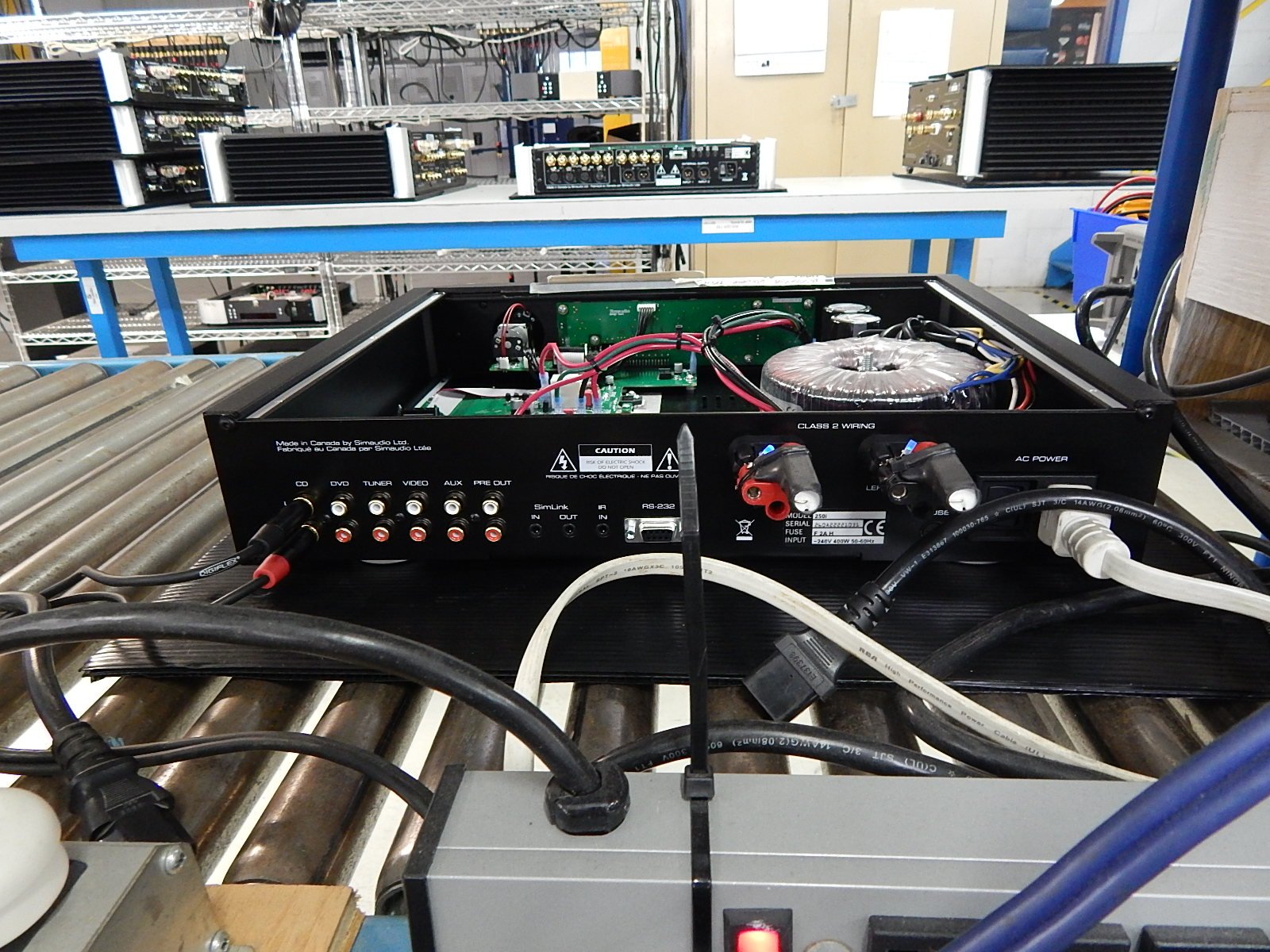
Dominique then took me to the lower level where I spotted the aforementioned instruments, along with several different brands of speakers—Magnepans, Rockports, Audio Physics, as well as the company’s own new Voice 22 standmounts. MOON uses various speakers, Dominique said, to evaluate the sound of its equipment.
That evaluation happens mainly in the last place I visited—the company’s official listening room, a lush-looking environment tastefully bedecked in carpet, a faux-stone wall, room treatments, and a comfy listening chair. Across from that chair was a spread of matching MOON products—a 780D streaming DAC coupled to an external 820S power supply, a 850P preamplifier, and a pair of 888 mono amps. They were flanked by a pair of Dynaudio Confidence 60 speakers. Nordost cabling cabled everything together.
The sound was sublime—rich, refined, luxurious. It was a fitting and memorable end to my voyage to (the) MOON.
Merci, Dominique!
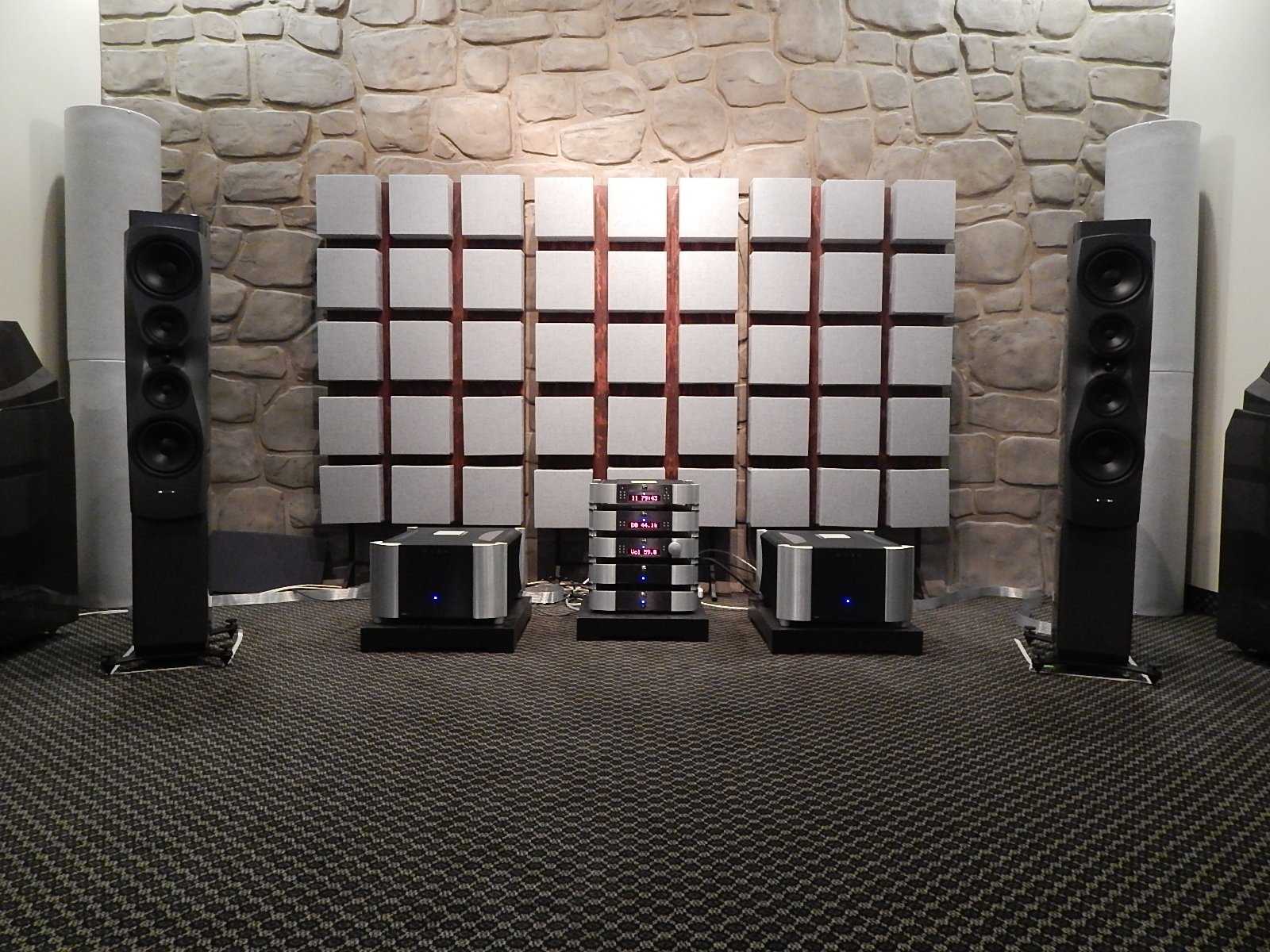
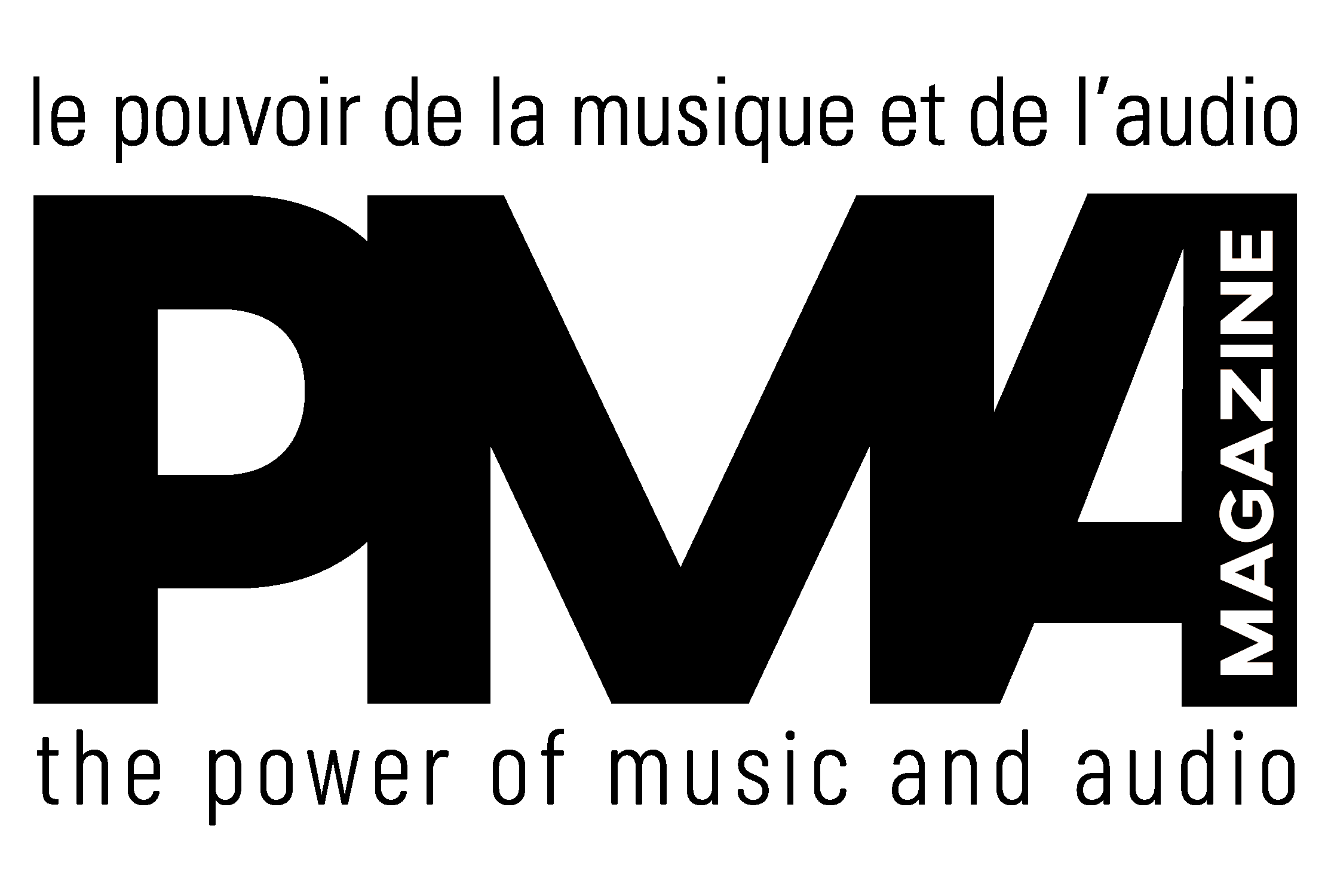

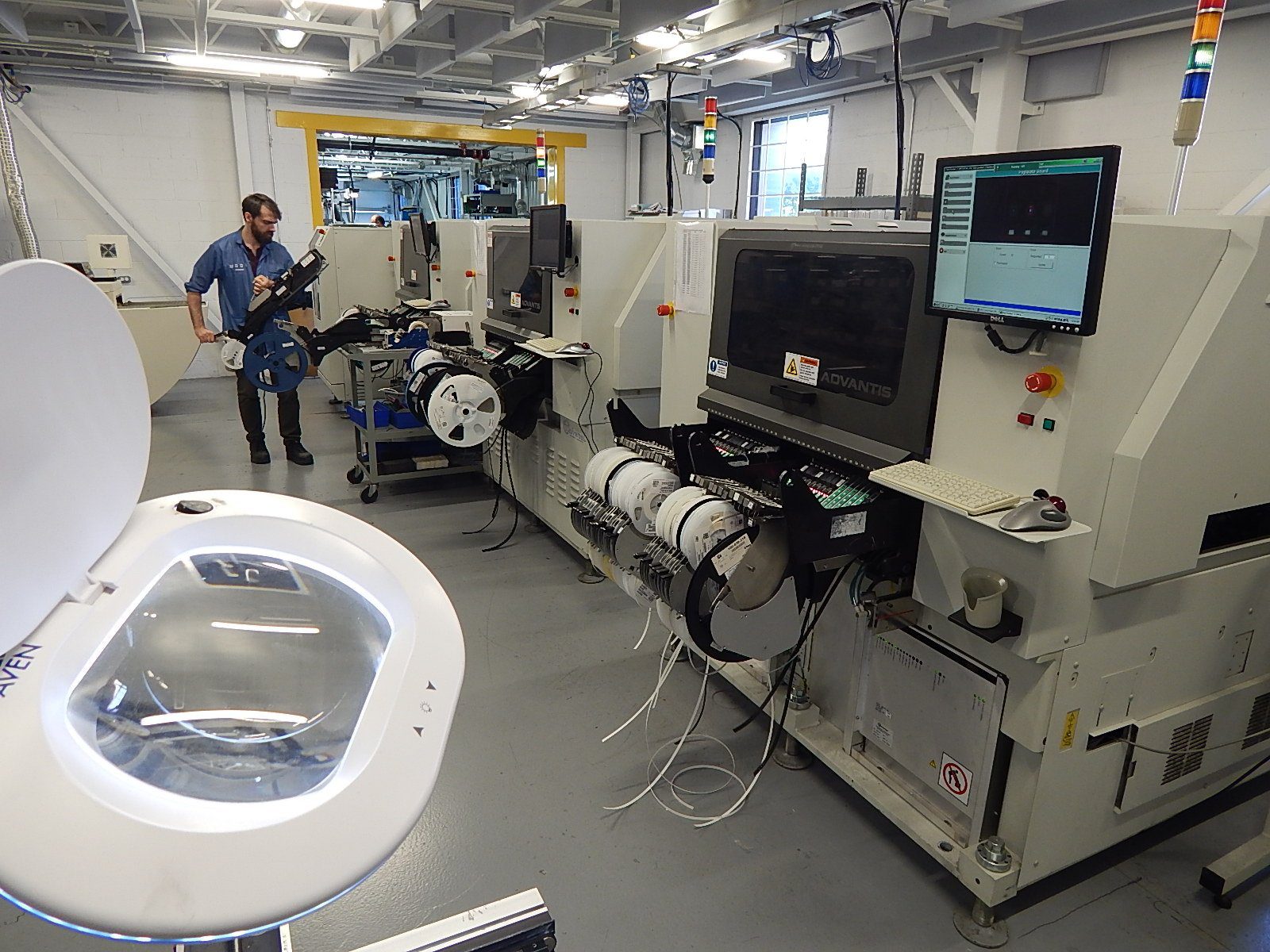













Leave a Reply